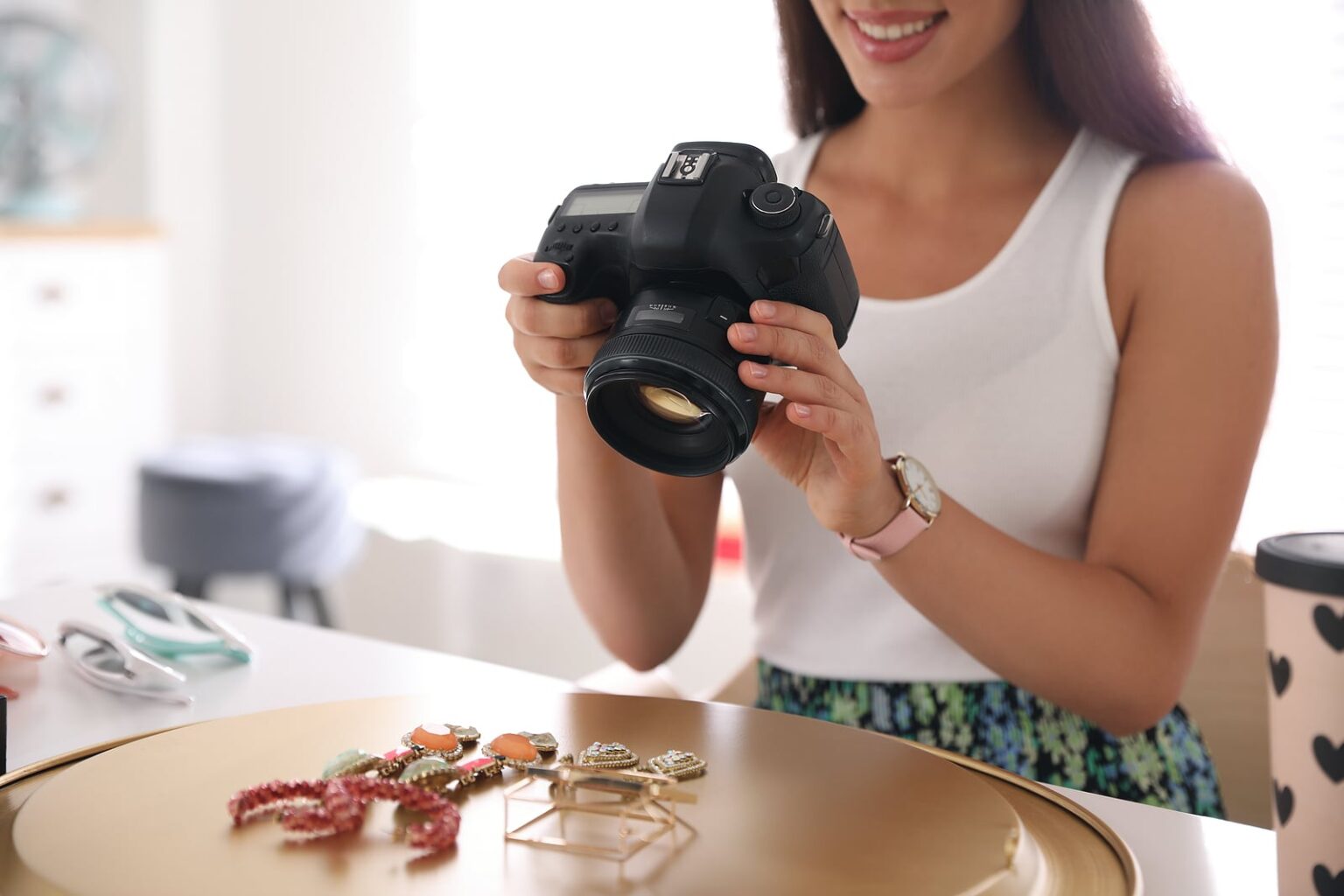Photographing jewelry and coins is an important and recommended step when keeping track of your high-value items for insurance purposes. Accurate images can assist insurance companies with assessing coverage limits but are also beneficial to those who need to make an insurance claim in the event of theft or damage.
High-quality photos can also be useful when selling jewelry or coins. Photos can help with the initial appraisal process, and potential buyers can use them as a reference since they provide detailed information on the items’ condition.
Learn how to take the perfect shots of your jewelry and coins to help determine the amount of coverage you need with these easy steps.
Equipment and Preparation
Taking quality photographs that accurately represent jewelry and coins requires the right type of camera with proper settings, a well-lit photography stage, and some minor preparation and detailing of the items you wish to photograph.
Choose the Right Camera Type and Settings
DSLR cameras with macro lenses are ideal for this type of photography, as they allow you to get close-up shots with great detail and clarity. For the best results, use a tripod and set the aperture to a low number (around f/16) to ensure everything is in focus. A higher ISO (camera sensitivity) will allow more light into the image, while a lower shutter speed will reduce blurring or shaking.
Set Up the Shooting Area
For lighting, natural light is always best. If shooting indoors, set up near a window with indirect sunlight. For the background, a plain white sheet of copy paper or piece of poster board works well. This makes the jewelry or coins stand out in the photos.
Alternatively, you can invest in a light box or make your own with a cardboard box, white fabric, and desk lamps with LED bulbs. A light box creates bright, diffuse multidirectional illumination and provides a neutral background for shadow-free photographs.
Prepare the Jewelry or Coins
To prepare the jewelry for photography, clean it with an anti-tarnish-infused polishing cloth to enhance its shine. For contrast, arrange the pieces on a neutral-colored background, such as black velvet or white foam board.
Never clean any coins you want to sell in the future. Cleaning coins reduces them to cull condition, dramatically reducing their value.
Photography Techniques for Jewelry and Coins
When photographing coins and jewelry for insurance or sale, you need images that provide the greatest amount of detail possible. This means you need close-up shots from numerous different angles.
Macro Photography
Macro photography is a technique used to capture close-up images of small objects such as jewelry and coins. It allows photographers to magnify the subject and reveal details that may not be visible to the naked eye, like hallmarks, signatures, or engravings.
There are a few different ways to achieve macro photography. One of the most common methods is to use a macro lens. These lenses have a high magnification ratio, typically around 1:1, meaning the subject is captured at life-size on the camera’s sensor. This allows for a high level of detail and sharpness in the final image.
Another way to achieve macro photography is to use extension tubes. These tubes are placed between the camera body and the lens, allowing the lens to focus closer to the subject than it normally would. This can be an affordable alternative to buying a dedicated macro lens.
Take Shots From Multiple Angles
Jewelry should be photographed from different angles with plenty of space around it for context. Focus carefully on important features such as stones or metalwork to highlight their colors and textures. Some important angles to shoot include:
- Overhead: Shooting from directly above the subject can create a unique perspective and can be used to show off symmetrical designs or patterns.
- Low angle: Shooting from a low angle, with the camera positioned close to the ground, can make the subject appear larger and more dominant in the frame.
- Frontal: A frontal angle, with the camera positioned directly in front of the subject, can be used to capture a full view of the piece and show off its overall design.
- Three-quarter: A three-quarter angle, with the camera positioned at a slight angle to the subject, can be used to create depth and dimension in the image.
When photographing small and delicate items, take extra care not to damage them while adjusting lighting or positioning them in the frame. Increase shutter speed settings on your camera if needed to prevent any motion blur from camera shake during shooting.
Post-Processing and Storage
When photographing jewelry or coins for jewelry insurance purposes, post-processing is a pivotal step to ensure clear and accurate images. To enhance the image, use editing software to adjust settings such as exposure, contrast, sharpness, saturation, and color temperature.
Organize and store your images with appropriate file format and resolution. This will make it easier for you to retrieve the files when filling out an insurance application or filing a claim. All relevant information, such as the date taken and item description, should be recorded along with each photograph. For best results, use high-resolution images saved as JPEG files rather than PNGs, which can take up more storage space.

Selling Unwanted Jewelry? Visit AU Precious Metals
If you have unwanted jewelry or coins, convert them into cash at AU Precious Metals. We buy gold and silver jewelry and coins in any condition. Visit AU Precious Metals or use our secure mail-in service to get an immediate quote based on the current fair market value of gold and silver. We offer fast, accurate, non-destructive XRF assaying techniques to help determine your piece’s value.
Contact us at (248) 833-6133 today for more information on how you can make money on jewelry and coins you no longer need.


